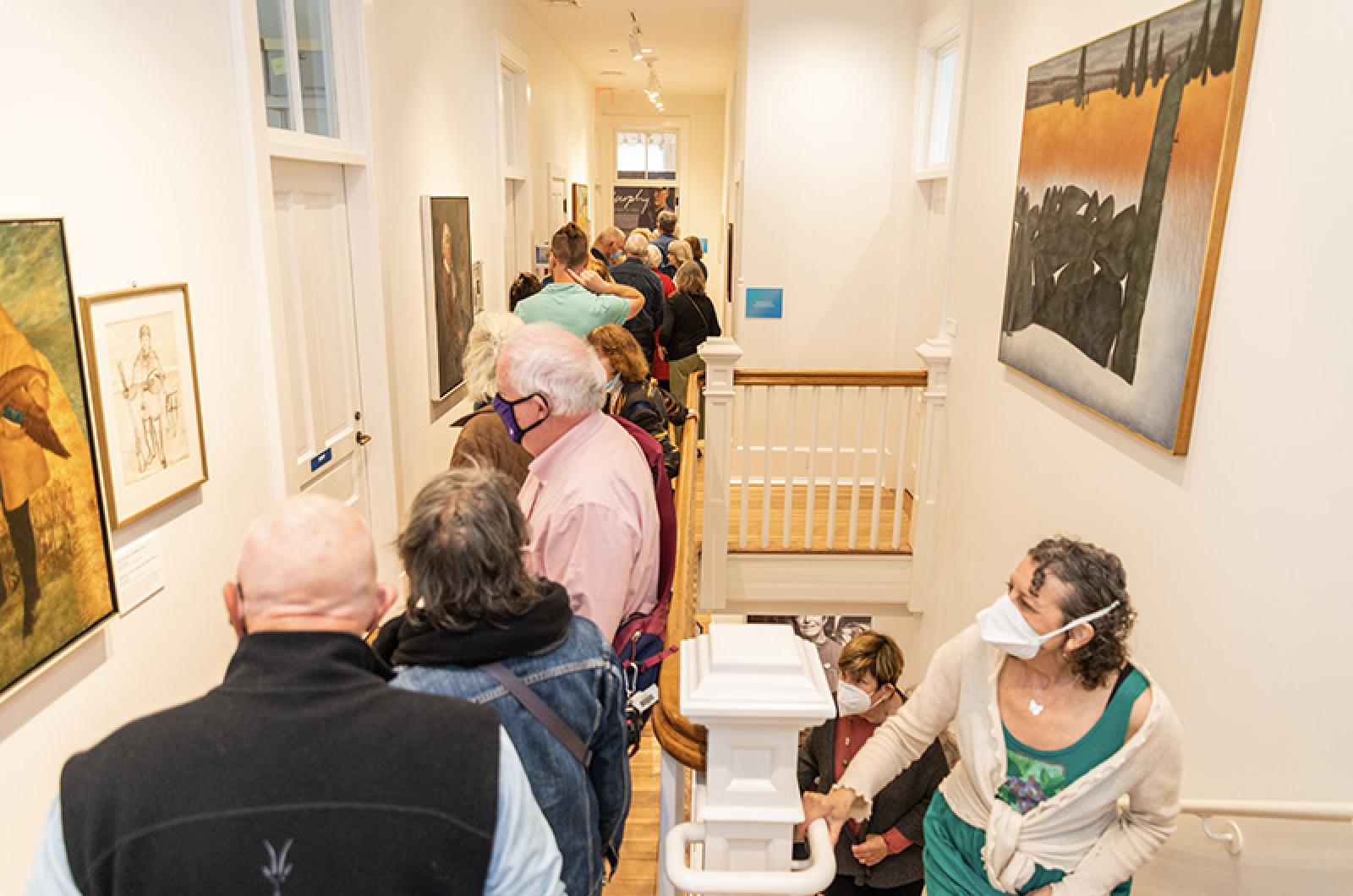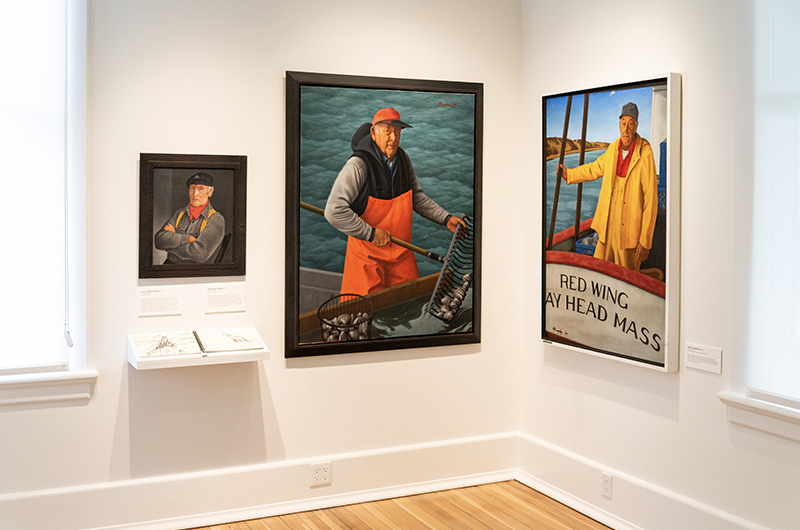The Martha’s Vineyard Museum — founded a century ago as the Dukes County Historical Society — has always been strong on Island history. But since its 2018 move to the old Marine Hospital in Vineyard Haven, the museum has also become a destination for art-lovers, with changing photography in the lobby and a series of outstandingly well-curated exhibitions in its galleries.
Stan Murphy at 100, on display through August 21 on the museum’s second floor, joins the recent Richard Lee and earlier Thomas Hart Benton shows among the museum’s triumphs, deeply immersing viewers in the artist’s life and work on the Vineyard.
Mr. Murphy, who came here as a young artist with his wife Polly in 1948 and painted here for more than 50 years, was born in 1922 and died in 2003. While some of his works are well known — notably the vast Island murals at the Katharine Cornell Theatre in Vineyard Haven, named for the actress who was one of his early patrons and Island friends — many pieces in the museum show are borrowed from family members and collectors.
Spanning his career, the paintings are joined by drawings, sketches and one-offs in other media: a shell-mosaic mask of a friend’s face and a masterfully carved wooden decoy of a merganser suggest the artist’s many talents.
Visitors to the galleries — this show overflows into the upstairs hall, as well — can see Mr. Murphy’s early work in drawing, caricature and cartoon, view family photos and even leaf through his sketchbooks.
Curator Anna Barber has also included artifacts that create an almost physical connection with the artist, such as a section of his studio door — oil-painted with checkerboard squares of every color —and the old nail-lettered sign for his up-Island gallery (now painter Kara Taylor’s).
Another charming inclusion is one of the cigar-box models Mr. Murphy used as he developed the Katharine Cornell murals, with tiny mock-ups that show variations in the themes he finally painted.
But it’s the portraits that — literally — catch the eye. Mr. Murphy himself meets your gaze from several self-portraits, including one in which he pictures himself as Rembrandt.
An artist who had to take a variety of Island jobs while establishing his career, Mr. Murphy often painted men at their work — frequently on the water. Instead of the stiffly-collared, black-cravat-necked sea captains of the 19th century, who posed in parlors with their ships sometimes appearing distantly through a window, Mr. Murphy pictured his skippers — Bob Flanders, Alfred Vanderhoop and others — in their yellow foul-weather gear, aboard their vessels.
His farmers are also on the job. David Flanders pauses for a moment with his cow Sunshine; Everett Whiting feeds an eager flock of hens as his young sons frolic in the barnyard.
Even cattle are worthy of portraiture. Shorty in the Morning Light depicts a dignified longhorn gazing through a Chilmark stone wall.
While Mr. Murphy became the Island’s foremost portraitist, he also painted Vineyard landscapes, houses and complex allegories like Biography of Ernest Mayhew, with a meadow sprouting from a shellfishing boat and a tremendous owl dwarfing farm roofs.
There’s even a barroom nude, which hung in the Black Dog Tavern’s kitchen for years, according to the museum’s panel text, which notes that Mr. Murphy did not use a live nude model.
Though the artist was known for painting what he saw — his oil-on-door Rock, for instance, is a quintessential Island erratic patched with blooms of lichen amid straw-colored grasses — some of his works in the show reveal visions of fantasy in their glowing-eyed birds, such as a wading heron with a small red heart in its beak.
To accompany this abundant show, the museum has produced an exhibition catalog that’s available in the gift shop alongside the book Where Magic Wears a Red Hat: The Art of Stanley Murphy.
The shop also has four large-format postcards of the Katharine Cornell Theatre murals, available individually. For more information, mvmuseum.org.







Comments (3)
Comments
Comment policy »